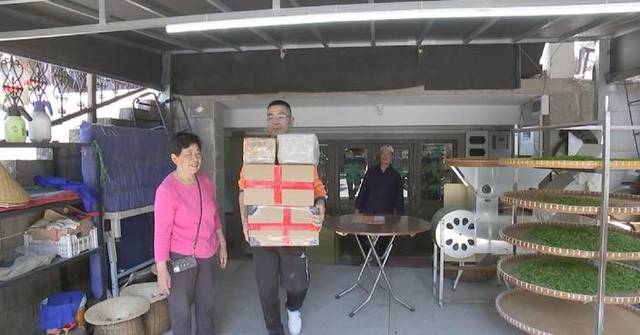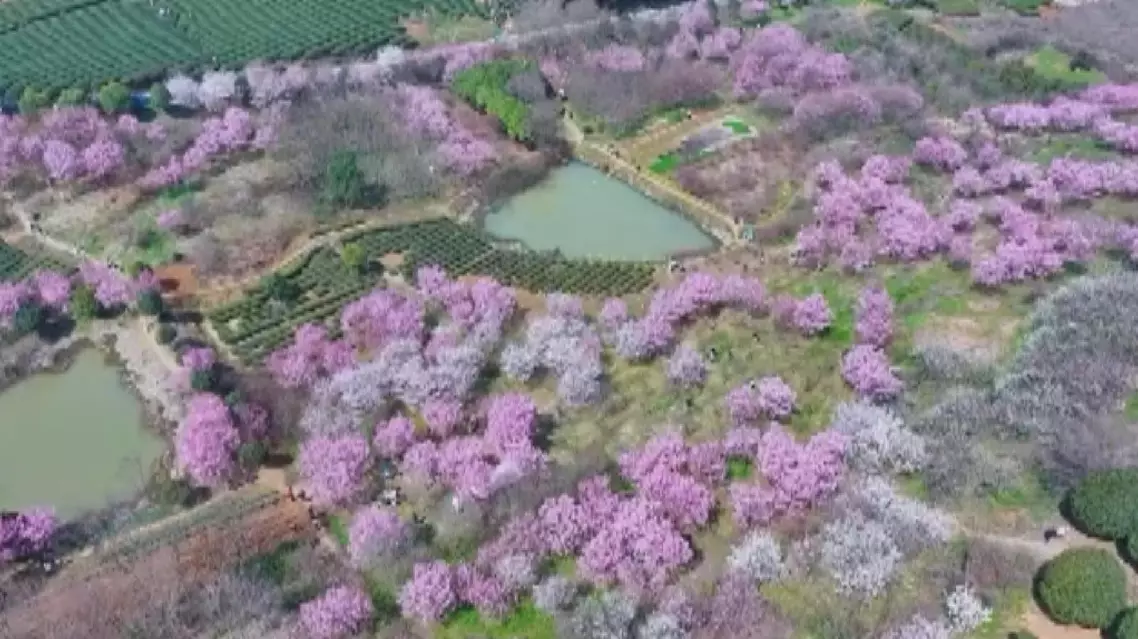More than 2.8 billion parcels were handled across China during the three-day Qingming Festival holiday that ended Sunday, the State Post Bureau said on Monday.
Approximately 1.399 billion parcels were collected during the holiday, marking a year-on-year increase of about 17 percent, according to the bureau.
It noted that about 1.429 billion parcels were delivered, representing an increase of about 15 percent year on year.
Recently, spring tea in Hangzhou City of east China’s Zhejiang Province has entered its peak season for picking.
To facilitate the delivery of spring tea, several courier companies have provided customized services, which not only include collecting parcels from tea farmers, but also help them pack parcels.
“Every time these deliverymen come to our house, they help us pack the parcels and send them out very quickly. We really trust the post office. They come to collect parcels at my door every day,” said Wang Peijuan, a tea farmer.
During the Qingming Festival holiday, delivery firms added additional road transportation lines and increased air transport capacity. Meanwhile, they also set up more portable delivery lockers and self-service courier stations to be more time-efficient.
“China’s consumer market continues to heat up and consumption potential is being released at an accelerated pace. Via reducing circulation costs, the express delivery sector has promoted consumption upgrades and optimized its own industrial structure, contributing to regional coordination and economic resilience enhancement,” said Liu Jiang, director of the Strategic Planning Research Department with State Post Bureau’s Development Research Center.
Over 2.8 bln parcels handled in China during Qingming holiday
As spring arrives, many scenic spots in China have incorporated flower culture into tourism experience, unleashing great consumption vitality and revitalizing the fine traditional culture.
The annual Huazhao Festival, or the flower goddess’ birthday, featuring a series of activities, including a boat parade and a folk ritual, is celebrated in Xixi Wetland in Hangzhou, east China’s Zhejiang Province recently.
During the festival, the Xixi Wetland uses flowers as a medium to conduct a variety of experiential activities such as the flower market and head-pinned flowers of the Song Dynasty (960-1279), allowing visitors to immerse themselves in traditional folk customs.
“Today I’m wearing this dress, which actually has some floral elements on it. And then I happened to come across the 12 flower goddesses (performers in traditional costumes) during the Huazhao Festival, which I found quite magical,” said Ren Shali, a tourist.
Meanwhile, the romantic cherry blossoms are in full bloom at Anji Archaeological Park in these days. As the gentle breeze drifts through the air, carrying the sweet fragrance of flowers, it creates an enchanting ambiance throughout the region, attracting lots of tourists per day.
At the park, a coffee shop has ingeniously created new coffee drinks themed around cherry blossoms, allowing visitors to fully savor the color, fragrance, and taste of the cherry blossoms.
“During the cherry blossom season, we have specially crafted a cherry blossom latte through adding cherry blossom syrup, which has been quite popular among the public here,” said Yuan Miaomiao, a barista at the coffee shop.
Peony flowers in Heze City of east China’s Shandong Province is ushering in blossoming season, attracting flowing streams of visitors from all over the country to enjoy this colorful spectacle.
A craftswoman and representative inheritor of intangible cultural heritage led her team to the streets and squares and showed people peony-shaped paper-cutting skills, allowing residents to immerse themselves in the traditional folk craft of the country.
“I hope that more people can learn about the peony culture of Heze and paper-cutting skills of intangible cultural heritage through this event, allowing traditional culture to rejuvenate with new vitality in modern society,” said Chang Fengling, a representative inheritor of Heze’s paper-cutting.
Forsythia flowers have turned the mountains of Weihui City of central China’s Henan Province into a golden valley.
Taking advantage of the best viewing period for forsythia flowers, local organizations are hosting flower-viewing study tours. Students can get closer to nature and experience the culture of fresh flowers through these study tours.
In Kunming City of southwest China’s Yunnan Province, local markets have a flourishing business, because vibrant flowers in various colors, as food materials, have attracted many locals and tourists alike.
Scenic spots across China incorporate flower culture into tourism


